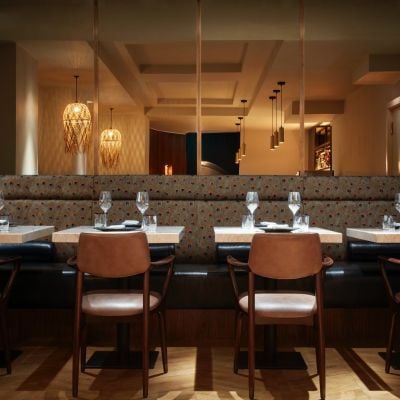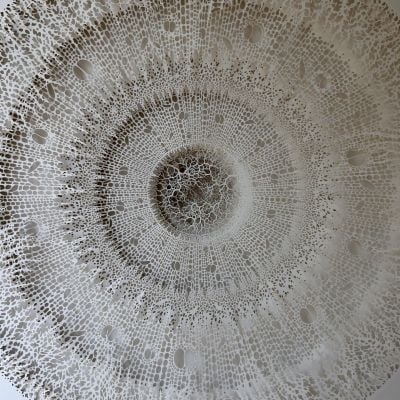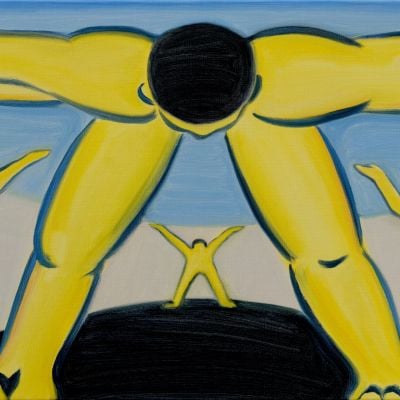Worth Its Salt
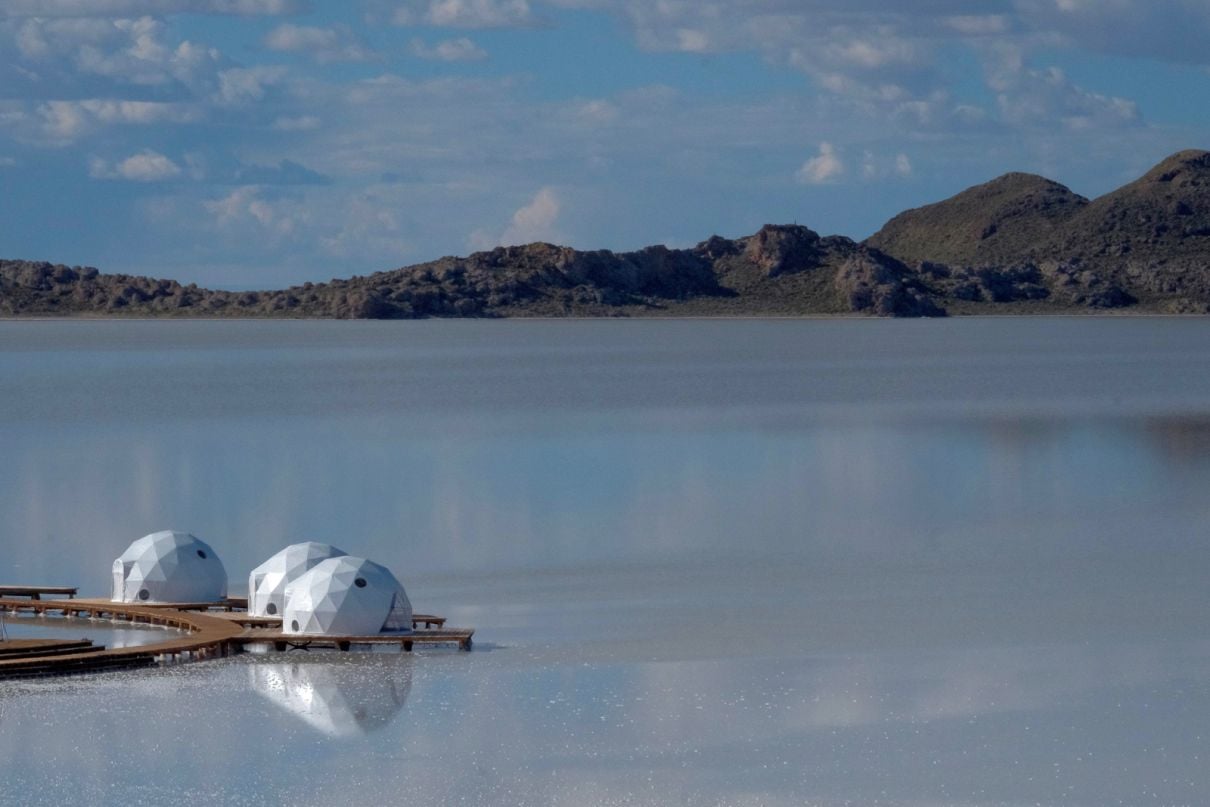
A sustainable adventure on Bolivia’s Salar de Uyuni awaits intrepid travellers.
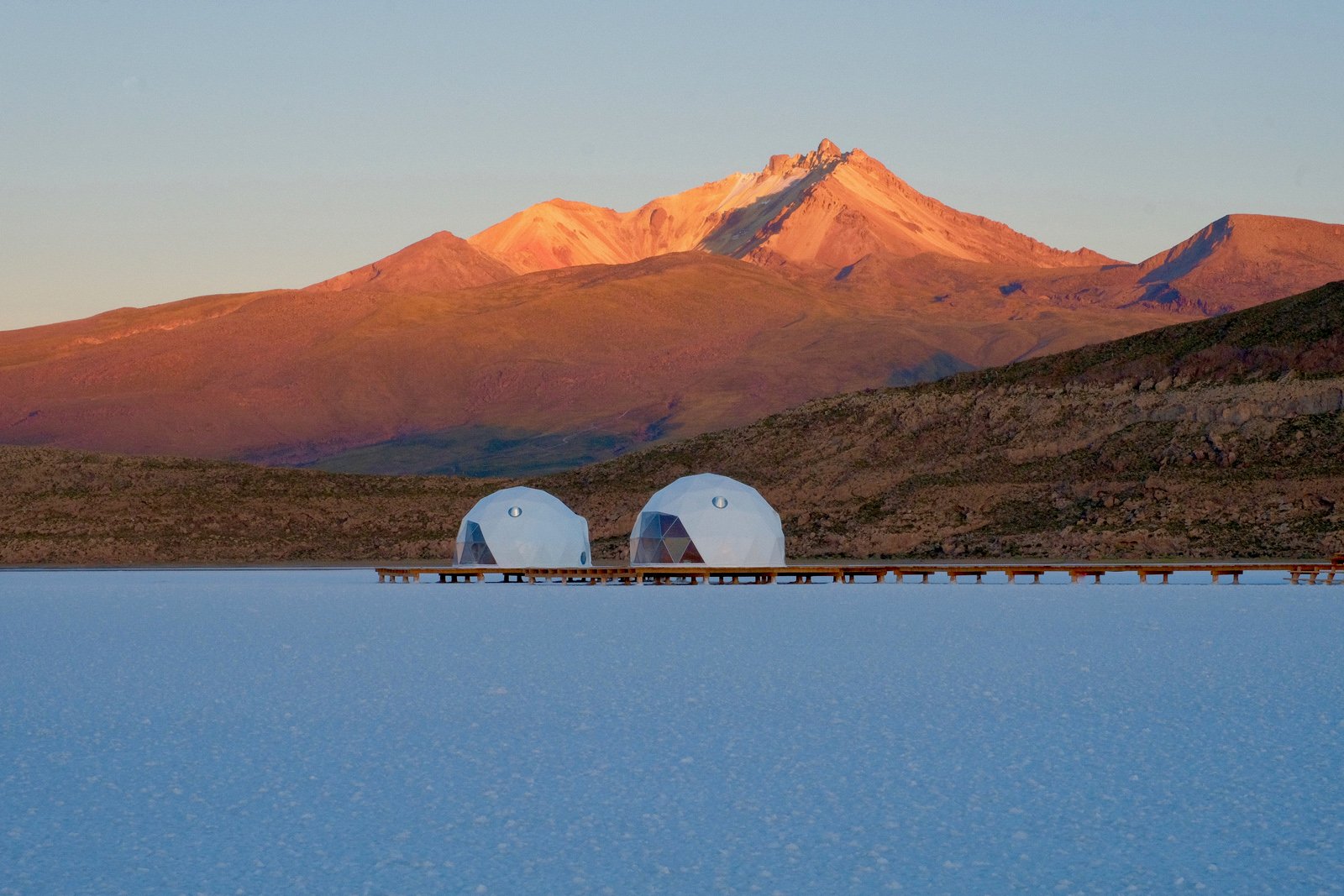
Set in one of the most remote corners of the world, an hour’s flight from La Paz, Bolivia, the sight of Kachi Lodge on the surface of the endless Salar de Uyuni salt flat is both exhilarating and unreal.
In the distance, the white geodesic domes of the lodge look like a space station. In the middle of this lunar landscape, Kachi Lodge has other futuristic elements: it is one of the most advanced sustainable luxury camps on the planet. Built on a wooden platform at 3,660m high near a cacti-covered island, the six suites turn a stay on the altiplano into the most comfortable adventure, with cutting edge-green infrastructure. Pleasure meets ethics.
Operational all year round, Kachi Lodge is exemplary in many ways, starting with a strict commitment to the environment. Smart thinking was needed: the lodge is installed on an abrasive salt crust, with no access to running water or electricity.
The lodge lives by a few simple principles. First: no noise pollution. The technology used emits very little noise, avoiding any sound pollution on the Salar and creating a silent haven for guests.
Second: leave no trace. Building the 1,600-square-metre wooden platform (made with local almendrillo wood) meant employing 15 local villagers for three months. No drilling is allowed on the Salar; the lodge simply stands on short wooden poles. Should it be dismantled, one rainy season would erase all traces of its presence.
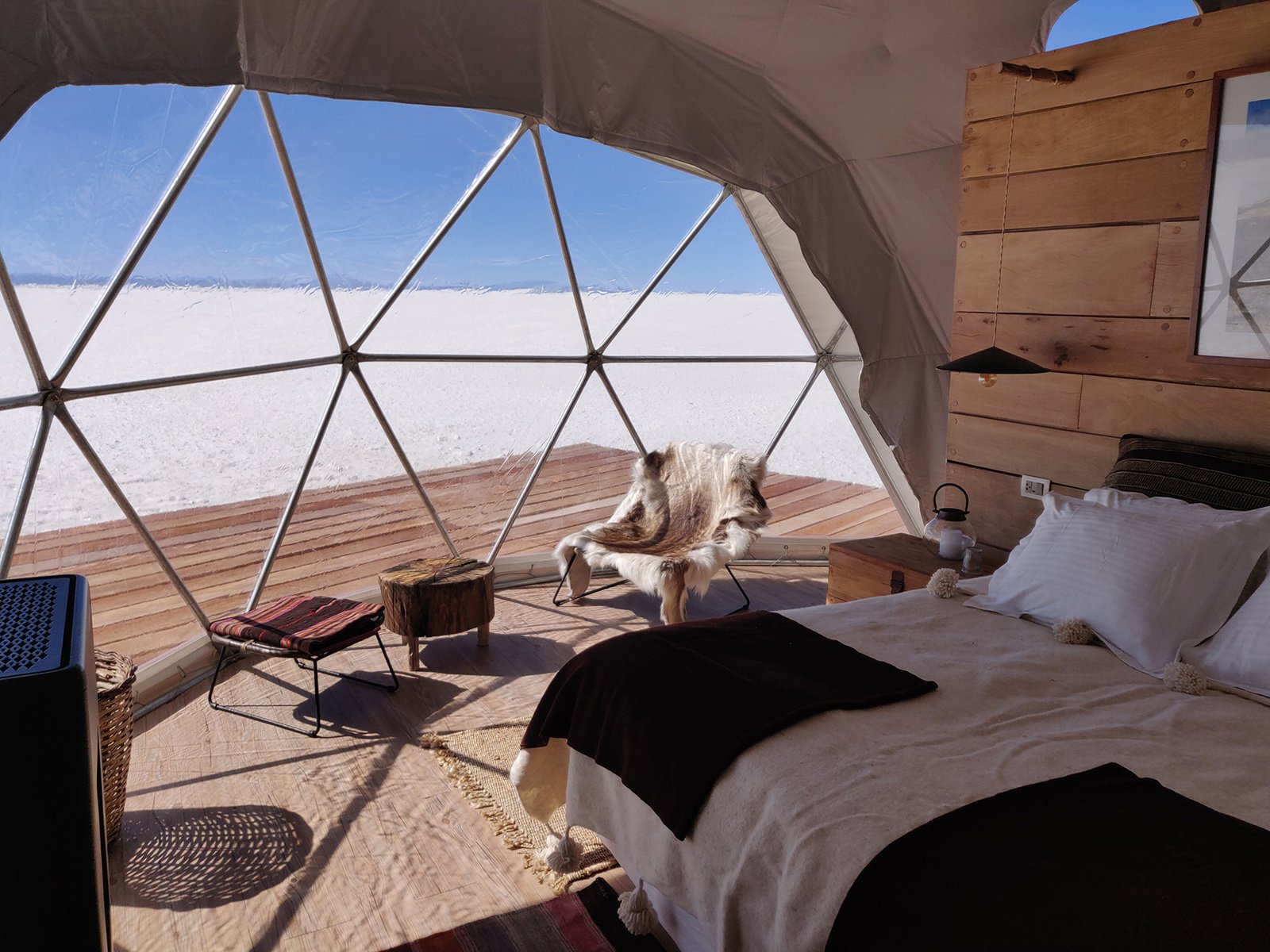
Third: no waste. Kachi Lodge applies the strictest no-plastic policy and no consumer good is available for purchase at the lodge. Upstream, chef Gustu’s team ensures that there is little to no food waste. In addition, Kachi’s management team wishes to set up a recycling unit in the village to incinerate the lodge’s waste, as well as train nearby local villages to manage their own waste, therefore transferring know-how and technology to keep the area pristine.
Fourth: green energy. Kachi Lodge is committed to guests being cosy and comfortable. To ensure perfect heating, stoves are installed in each dome: the pellets used to run them are made from the wood left over from the construction of the platform. The lodge also runs thanks to 40 square metres of solar panels that heat up water and charge batteries. The back-up generator (and salt-water batteries, which are 80 percent recyclable) also run on solar. Energy efficient, the whole camp runs on 24V.
Fifth: water. Kachi Lodge uses two water tanks (one for clean water, one for grey waters) and draws 2,000 litres of water per day from the village. Toilets are another important matter: no hole can be dug on the Salar. Incineration toilets have been placed in each suite, transforming organic material into neutral ash that has no impact on the environment.
Pleasure is another cornerstone at Kachi Lodge. Celebrated as one of South America’s best restaurants, Gustu, in La Paz, believes “it can change the world through food”. Gustu, which means ‘flavour’ in Quechua language, creates haute cuisine from native Bolivian products, local flavours and ancient knowledge. Gustu signed a partnership with Kachi to oversee the lodge’s food and beverages. As a result, inspiring daily cooked meals craft a unique gastronomic journey through Bolivia’s rich biodiversity; the experience is made complete with local wines, a herbal tea station and upcoming culinary workshops.
Then art. Who could think that life on the rugged Salar is the perfect set-up for land art installations? A celebrated international artist with galleries in Miami and New York, Gastón Ulgade plays with all kinds of media: photography; land art; installations using local textiles; and carved-out soft sculptures that mimic cactus forms and shaman spirits.
Back inside the lodge, the main lounge and suites are a natural haven. Inside each heated dome, one discovers an inviting set-up: furniture crafted out of regional materials, and bespoke textiles and decorative details add a welcome twist to the interiors. Picture handmade woven blankets (in naturally dyed lama and alpaca wool) designed in La Paz by Véronique Rolland, founder of Andi’Art; handcrafted lamps made from reclaimed cactus wood, old water sieves or straw; rattan lounge chairs and small wooden stools. It is perfect to enjoy the impossibly beautiful sunrises and sunsets on the Salar.
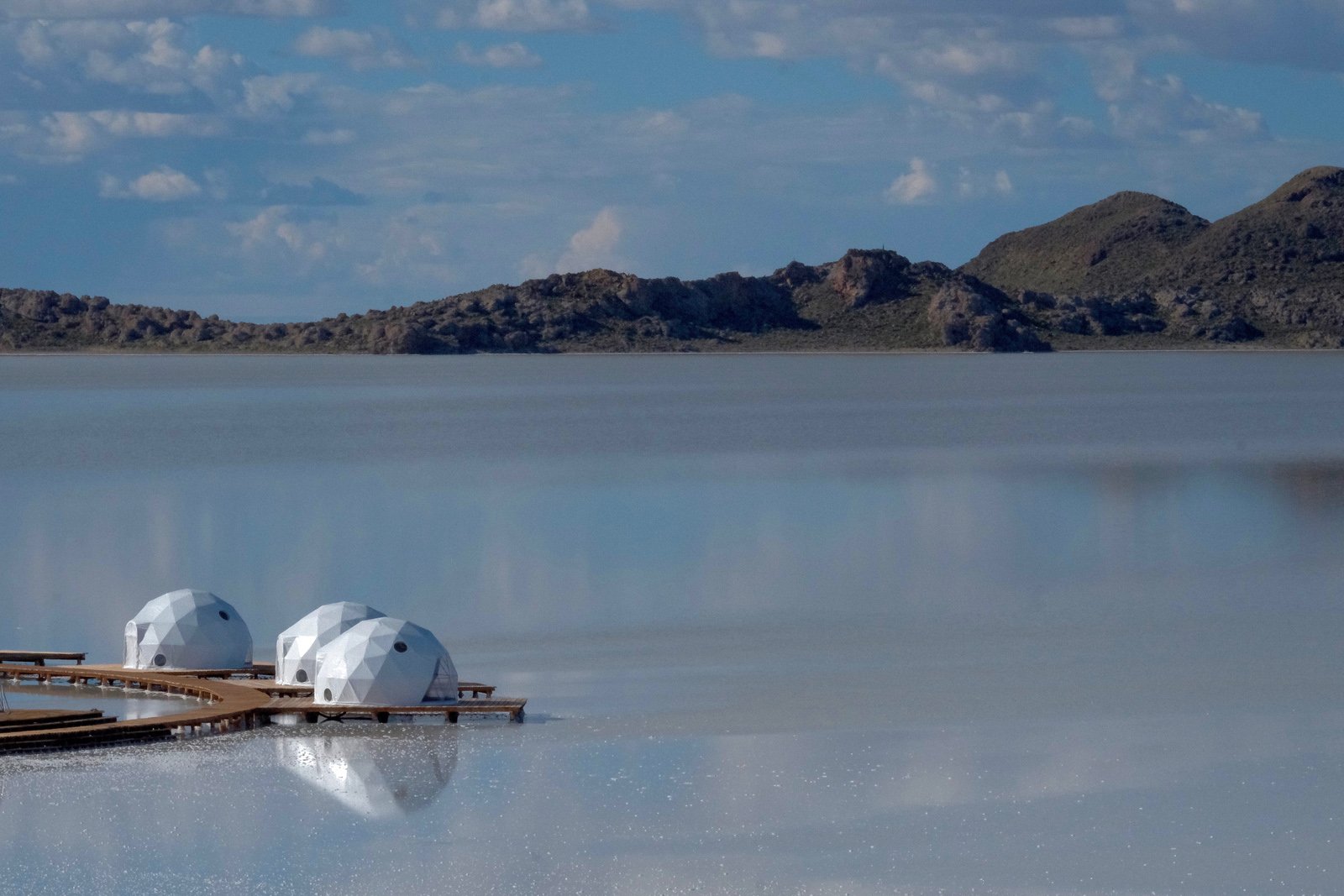
With Kachi Lodge as base camp, exploring the great outdoors is a must. Daily activities range from cultural excursions to the ancient archaeological site and scarred grounds of Alkaya (where ancient mummies can be seen) to high-altitude hikes on the nearby Tunupa volcano, amid ochre and red-coloured earth. Daily visits to the quinoa fields or walks to encounter lama farmers and their herds are also a unique way to understand the local culture — and the dedication needed to fight the extreme climate and make a living out of it. During the rainy season, the Salar turns into a thin lake where one can paddle, canoe or simply enjoy a photographic session as clouds endlessly reflect on the surface of the water.
At night, when the telescope is out, the sky seems to open and pour stars above one’s head. The Salar is a place of endless possibilities.
This article originally appeared in Billionaire's Earth Issue, September 2019. To subscribe contact




